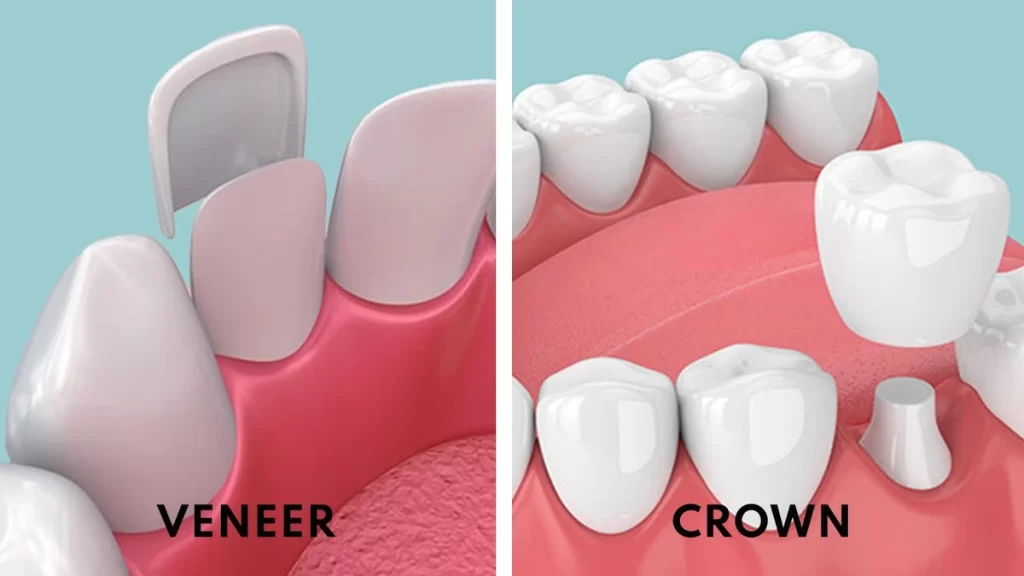
A bright, confident smile is a powerful asset. For those looking to enhance their smile, veneers and laminates are popular cosmetic dentistry options. However, choosing between the two can be challenging as they share similarities yet have distinct differences. In this blog, we’ll compare veneers and laminates to help you make an informed decision for your smile enhancement journey.
Understanding Veneers and Laminates
Veneers:
- Composition: Veneers are thin shells, typically made of porcelain or composite resin, custom-designed to cover the front surface of teeth.
- Purpose: Veneers are used to improve the appearance of teeth affected by discoloration, staining, minor chips, or uneven spacing. They can also reshape teeth.
- Durability: Porcelain veneers are highly durable and resistant to staining. They can last 10-15 years or more with proper care.
- Application: The application process involves removing a small amount of enamel from the tooth’s surface to create space for the veneer. Veneers are then bonded to the teeth.
Laminates:
- Composition: Laminates are ultra-thin shells, even thinner than veneers, usually made of porcelain. They are custom-made to adhere to the tooth’s surface.
- Purpose: Laminates serve a similar purpose to veneers, addressing minor imperfections, stains, and enhancing the appearance of teeth.
- Durability: Laminates are thinner and more delicate than veneers. While they can last for several years, they may need replacement sooner than veneers.
- Application: The application process for laminates is less invasive as they require minimal enamel removal, preserving more of the natural tooth structure.
Comparing Veneers and Laminates
**1. Appearance:
- Veneers: Veneers provide a highly natural appearance due to their thickness and durability. They are known for their ability to mimic the translucency of natural teeth.
- Laminates: Laminates are thinner and may appear slightly less natural, especially when used for major smile enhancements.
**2. Strength:
- Veneers: Veneers are sturdier and more resilient to staining and chipping.
- Laminates: Laminates are thinner and may be more susceptible to damage over time.
**3. Tooth Preparation:
- Veneers: The application process involves removing a small amount of enamel, which is irreversible.
- Laminates: Laminates require less enamel removal, preserving more of the natural tooth structure.
**4. Longevity:
- Veneers: Veneers generally last longer, making them a more durable choice.
- Laminates: Laminates may require replacement sooner than veneers.
**5. Cost:
- Veneers: Porcelain veneers tend to be more expensive due to their longevity and natural appearance.
- Laminates: Laminates are typically more affordable, making them an attractive option for minor smile enhancements.
Choosing the Right Option
The choice between veneers and laminates depends on your specific dental needs, budget, and desired outcome. For major smile makeovers and long-term durability, porcelain veneers are often the preferred choice. However, if you have minor imperfections and prefer a less invasive procedure, laminates can provide satisfactory results at a lower cost.
It’s crucial to consult with a qualified cosmetic dentist who can assess your oral health, discuss your goals, and recommend the most suitable option. Regardless of your choice, both veneers and laminates can transform your smile, boost your confidence, and leave you with a stunning set of teeth to show off proudly.




